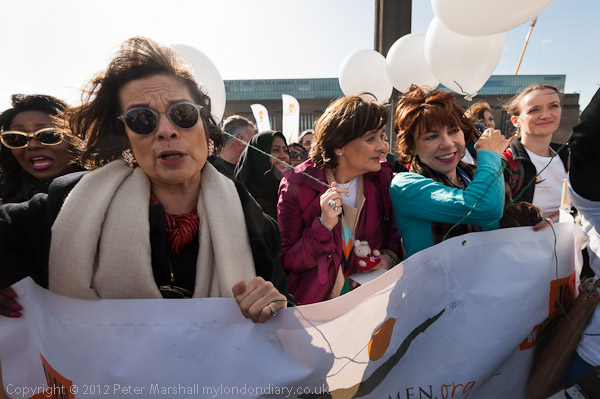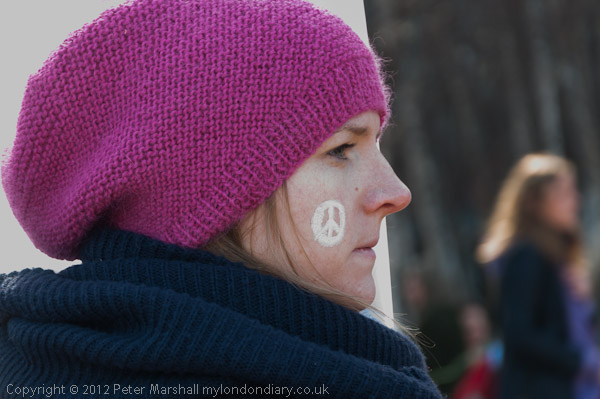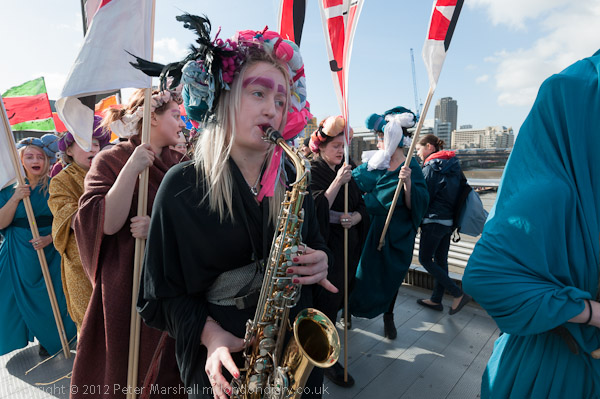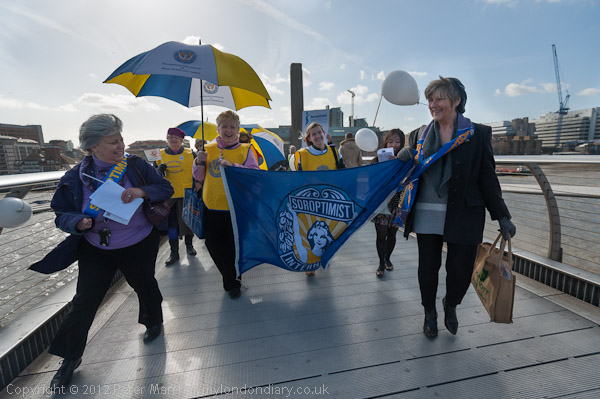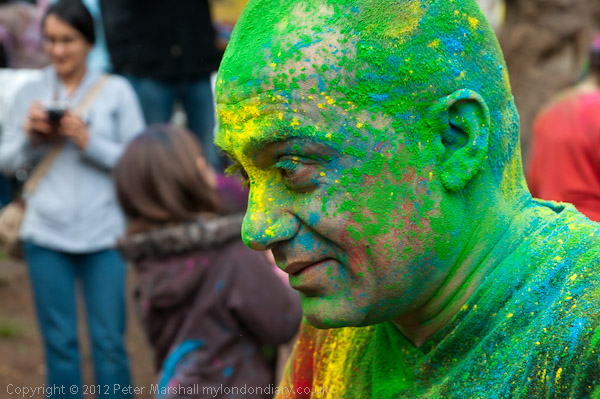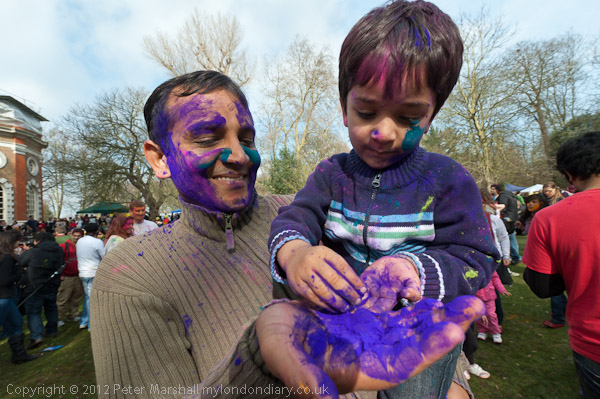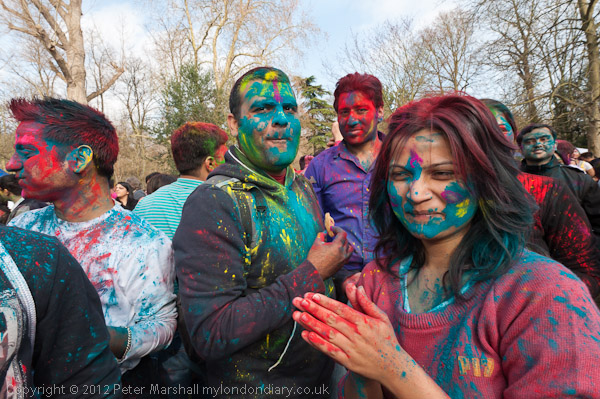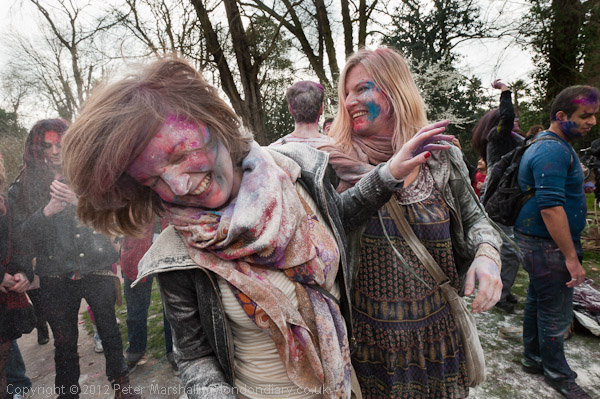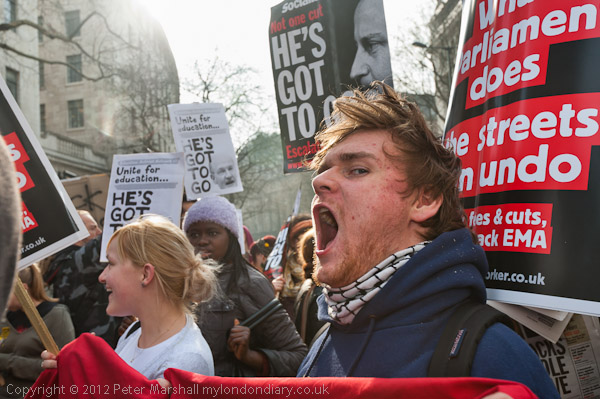
The march reaches Aldwych on its way to Westminster. 14 March 2012
Student protests this year have seemed rather muted compared to the event around the end of 2010, but the march a couple of weeks ago brought back memories of these, as one of the main foci of of protest was the forthcoming trial of student Alfie Meadows, rushed to hospital at death’s door after having been batoned on the head by police on Dec 9th and only saved after lengthy brain surgery, but now on trial for ‘violent disorder’, presumably for violently attacking a police baton with his head. The trial of him and four others began this Monday and is expected to last several weeks.
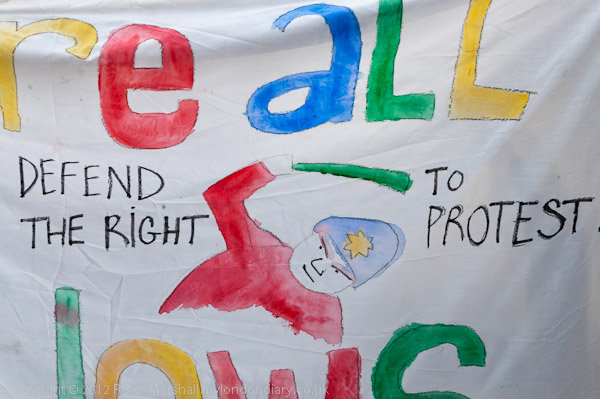
Detail of banner ‘We are all Alfie Meadows – Defend the Right to Protest’
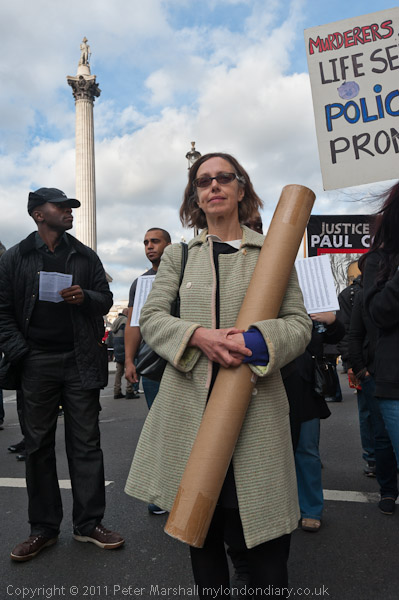
Susan Meadows, mother of Alfie at last October’s ‘United Families and Friends‘ march
The tricky part of photographing protests is being in the right place at the right time, and often the interesting things happen without any warning. There were several places where I thought it likely that something might happen, and opposite Downing Street was one of them. So I made sure I was at the side of the march opposite the gates and waited as the front of the march moved passed me and suddenly a few seconds later everyone sat down on the road. Most of the photographers (and there were an awful lot there) were ahead of the march in front of the main banner, but I was able to quickly move into the crowd as they were sitting down and chose a suitable place to photograph.
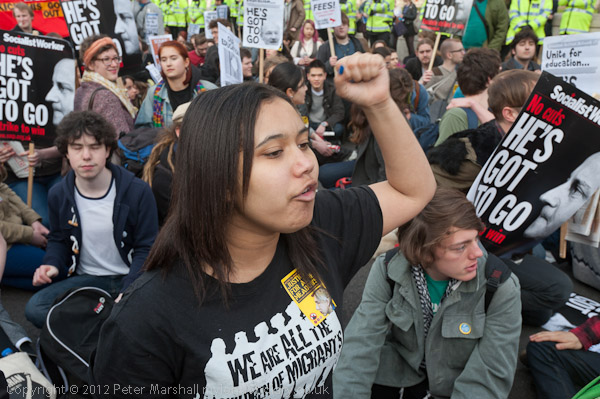
I took a whole series of this animated young woman, working very close to her with the D700 and 16-35mm, and then was in an ideal position when Clare Solomon stood up and spoke.
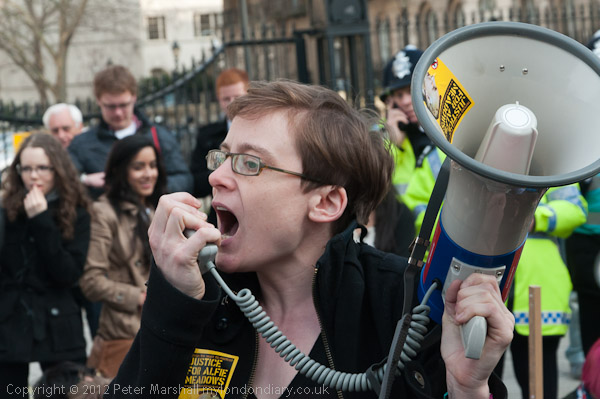
This time I was working with the D300 and the 18-105mm and she was just over 2 metres away – the lens at 66mm (99mm equivalent.) I hadn’t known exactly what was going to happen, and the exact details came as a bonus, but I was in the right position because I’d thought ahead.
Of course it doesn’t always work out, and often- including a couple of times on this event – I’d anticipated possible outcomes that didn’t occur. But later, after the protest had reached its destination outside the ministry responsible for higher education I cam across a small group of clowns, and although they were not telling people what they were going to do, I was fairly sure they were going to do something, and it seemed more than likely from where they had gathered in a huddle that it was going to involve the bank opposite the ministry.
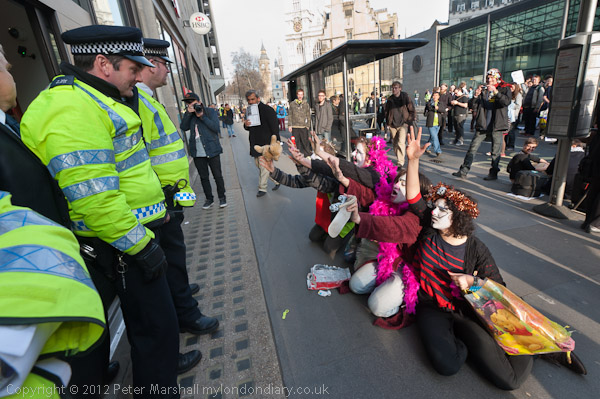
Only one other photographer seems to have noticed at this point
So I was ready when they started rushing around and screaming, and down on the pavement by the police standing at the bank door almost before they were. The light wasn’t too good and I didn’t get a picture that really satisfied me, but when they moved off and then rushed one of the cash machines I was still with them, and the pictures as they kissed this and then sat on the ground and burnt a £5 note were rather better, though by the time that happened there were so many other photographers around me that I couldn’t move.
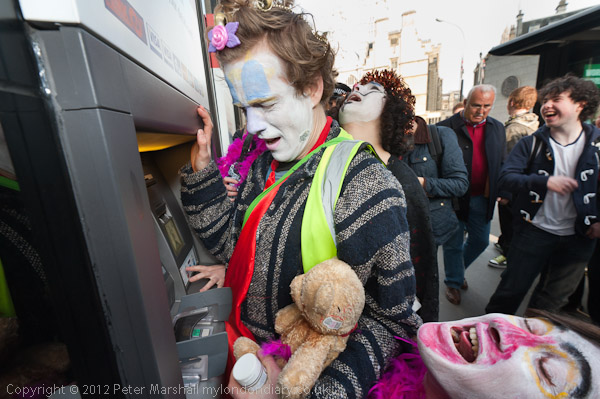
You can see many more pictures from the march and protest in Students March Against Fees on My London Diary. And after that large event I went on to photograph a rather smaller event with a leprechaun leading a protest against fracking outside a conference – Frack Off Big Oil! Some days things just work out well, and this was one of them.
________________________________________________________
My London Diary : Buildings of London : River Lea/Lee Valley : London’s Industrial Heritage
All photographs on this and my other sites, unless otherwise stated are by Peter Marshall and are available for reproduction or can be bought as prints.
To order prints or reproduce images
________________________________________________________
